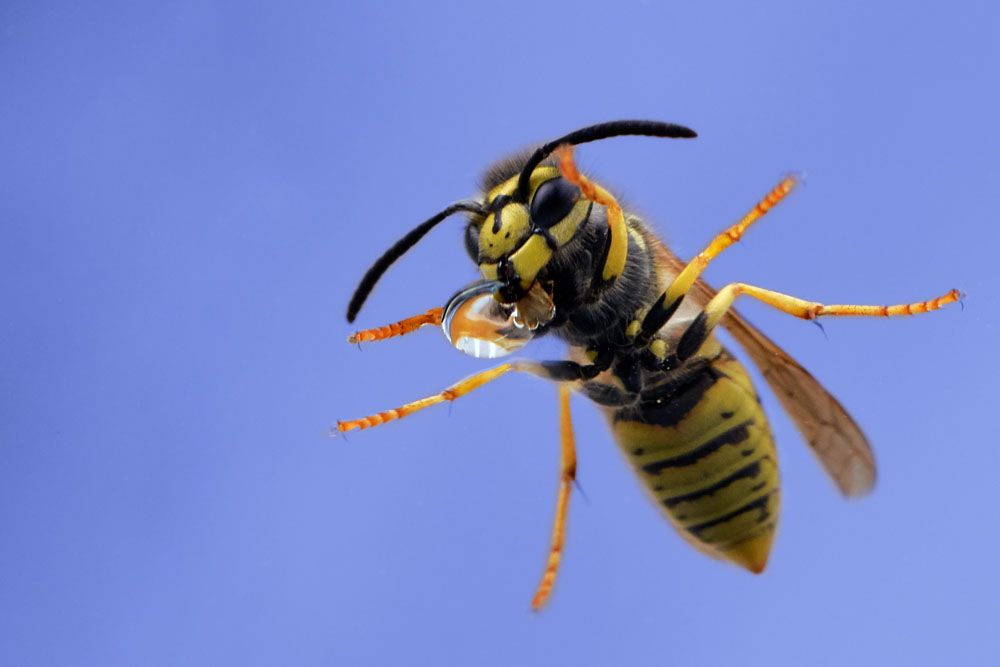
German Yellowjacket – Vespula germanica
German Yellowjacket: Appearance, Territory, Damage and Life Cycle
Latin Name: Vespula Germanica
Appearance: V. germanica workers are always sterile females and are around 13 mm (1/2 inch) in length; queens are slightly bigger, measuring up to 18 mm. The abdomen of the yellowjacket is normally colored in black and yellow, with a tiny spade-shaped black mark on the first abdominal segment and a series of black dots down both sides from the second to the fifth segments.
Hosts Plants: German wasps eat a variety of foods. Carrion, living arthropods (including spiders), fruit, honeydew, and processed human food and rubbish have all been observed. Adults consume insects, nectar, and other sweet liquids, while workers deliver pre-chewed protein to the larvae. Their nests frequently appear to be plastered/sprayed onto a surface; these are not the traditional hanging, football-shaped nests of bigger paper wasps.
Territory: The German yellowjacket is a void nesting species that may be found over most of the northeastern United States, into Canada, and all the way down the Pacific coast into California. It is found in Chile, Argentina, New Zealand, and Australia, in addition to its original countries in Europe. Although it is generally a ground nesting species in Europe, Australia, and New Zealand, it is frequently found nesting in cavities within structures in North America. It is most frequent in urban and suburban areas, although it may also be found in rural structures.
Damage Insect Cause: German and common wasps forage for protein sources and “consume anything,” even live insects and road dead. They have a disastrous effect on our local birds, bats, lizards, and insects because they take away food supplies from the ecosystem. Wasps and their nests are best controlled using knockdown sprays and nest treatments.
Life History and Habits: Although most social wasps, such as yellowjackets and paper wasps, establish yearly nests, the German yellowjacket is known to reuse prior year’s nests on occasion. It is unknown how frequently this occurs, but considering the great size of nests found in attics, it is likely to occur more frequently than previously imagined. In New Zealand, where they nest in the ground, a perpetual nest 14 feet long and 5 feet broad was dug. Fertile queens that overwinter begin looking for prospective nest locations in the spring. They construct a little nest out of a few cells and forage for food to feed the first generation of workers. After the first brood hatches, these workers take up the tasks of hunting for food, feeding the larval yellowjackets, and expanding the nest.
